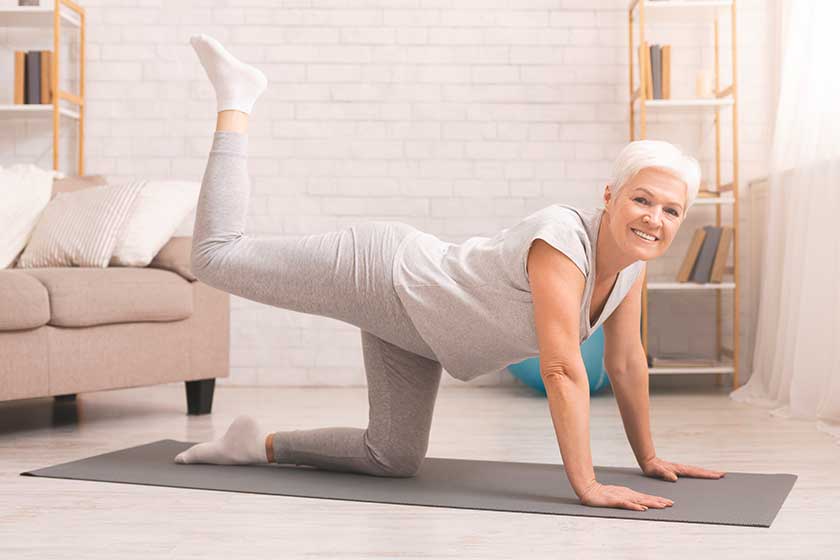Maintaining an active lifestyle is crucial for seniors to enjoy a high quality of life. Age-related changes often include a weakening of the abdominal muscles, which can cause poor posture, back pain, and reduced mobility. By incorporating stomach exercises for seniors into their daily routine, they can improve strength and balance, leading to enhanced overall well-being.
Understanding the Importance of Stomach Exercises for Seniors
The abdominal muscles play a vital role in supporting the spine, pelvis, and posture. Strong core muscles are essential for everyday activities such as standing, walking, and bending. Additionally, a stable core can reduce the risk of falls and injuries, which is especially important for older adults. By focusing on stomach exercises, seniors can target these muscles and improve their overall stability and mobility.
Getting Started Safely
Before beginning any new exercise program, seniors need to consult with their healthcare provider, especially if they have any existing health conditions or concerns. Once cleared to exercise, seniors can start slowly with gentle movements and gradually increase the intensity as they become more comfortable. It’s crucial to listen to their bodies and avoid overexertion to prevent injury.
Effective Stomach Exercises for Seniors
- Seated Knee Lifts: This exercise can be performed while sitting in a chair. Seniors can simply lift one knee towards their chest while engaging their abdominal muscles, then lower it back down. This movement helps strengthen the lower abdominal muscles and improve flexibility in the hips.
- Standing Side Crunches: Standing with feet hip-width apart, seniors can gently bend to one side, bringing their elbow towards their hip. This exercise targets the oblique muscles along the sides of the abdomen, helping to improve overall core strength and stability.
- Pelvic Tilts: While lying on their back with knees bent and feet flat on the floor, seniors can tilt their pelvis towards their chest, engaging their abdominal muscles. This movement helps strengthen the lower back and abdominal muscles while improving posture.
- Leg Raises: Lying on their back with legs extended, seniors can lift both legs towards the ceiling, keeping the lower back pressed into the floor. This exercise targets the lower abdominal muscles and can help improve core strength and stability.
- Plank Variations: Starting in a modified plank position with knees on the ground, seniors can engage their core and straighten their legs, holding the position for several seconds. This exercise helps strengthen the entire core and can be modified to suit individual fitness levels.
- Bridge Pose: Lying on their back with knees bent and feet flat on the floor, seniors can lift their hips towards the ceiling, engaging their glutes and core muscles. This exercise helps strengthen the abdominal muscles, lower back, and glutes, improving overall core stability.
- Seated Torso Twists: Sitting on a chair with feet flat on the floor, seniors can gently twist their upper body from side to side, engaging their oblique muscles. This exercise helps improve flexibility and mobility in the spine while strengthening the core muscles.
Additional Tips and Considerations
- Seniors need to warm up before starting their stomach exercises to prepare their muscles and joints for movement. Gentle stretches or light cardio activities such as walking can help increase blood flow and reduce the risk of injury.
- Proper form is essential for preventing injury and maximizing the effectiveness of each exercise. Seniors should focus on maintaining good posture and engaging their core muscles throughout each movement. If unsure about proper form, they can seek guidance from a qualified fitness instructor.
- Variety is key when it comes to stomach exercises. Seniors should aim to incorporate a mix of exercises that target different muscle groups to ensure a well-rounded workout. This variety not only keeps workouts interesting but also prevents muscle imbalances and overuse injuries.
- Breathing plays a crucial role in exercise. Seniors should remember to exhale during the exertion phase of each exercise and inhale as they return to the starting position. Proper breathing technique helps improve oxygen flow to the muscles and can enhance performance and endurance.
- Lastly, seniors should listen to their bodies and stop any exercise that causes pain or discomfort. It’s important to work within their limits and gradually increase intensity over time. If experiencing persistent pain or discomfort, seniors should consult with their healthcare provider for further evaluation and guidance.
We understand the importance of staying active and healthy as we age. Our community offers a range of fitness programs and activities tailored to seniors, including personalized exercise plans designed to target specific areas such as the stomach. With our supportive environment and expert guidance, seniors can enjoy the benefits of regular exercise in a safe and comfortable setting. Contact us today to learn more about our amenities and services and start your journey to a healthier lifestyle.







